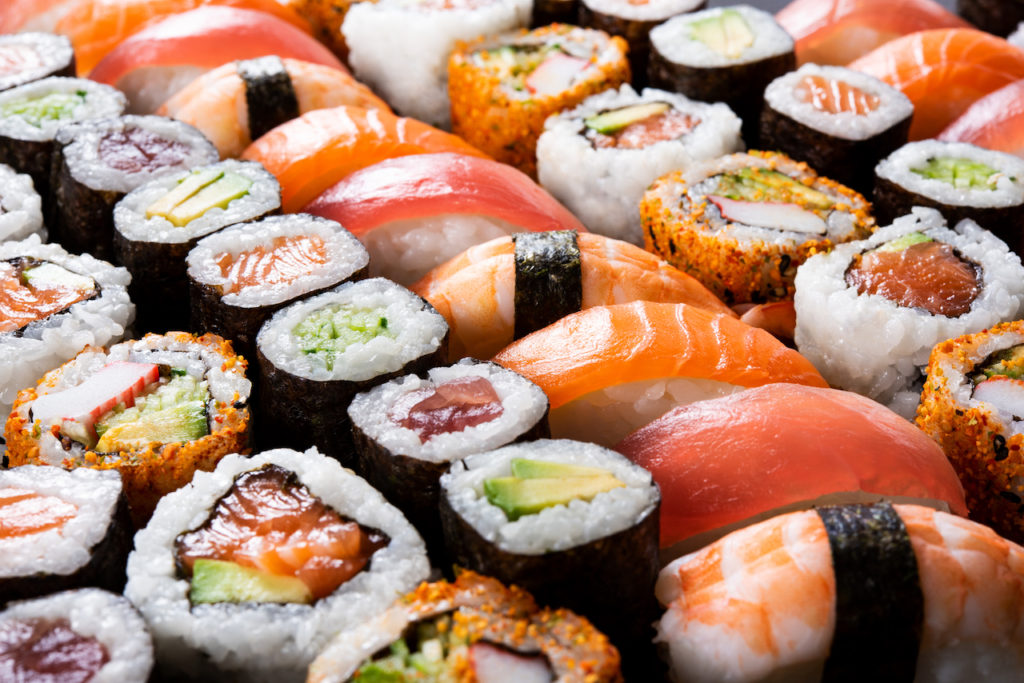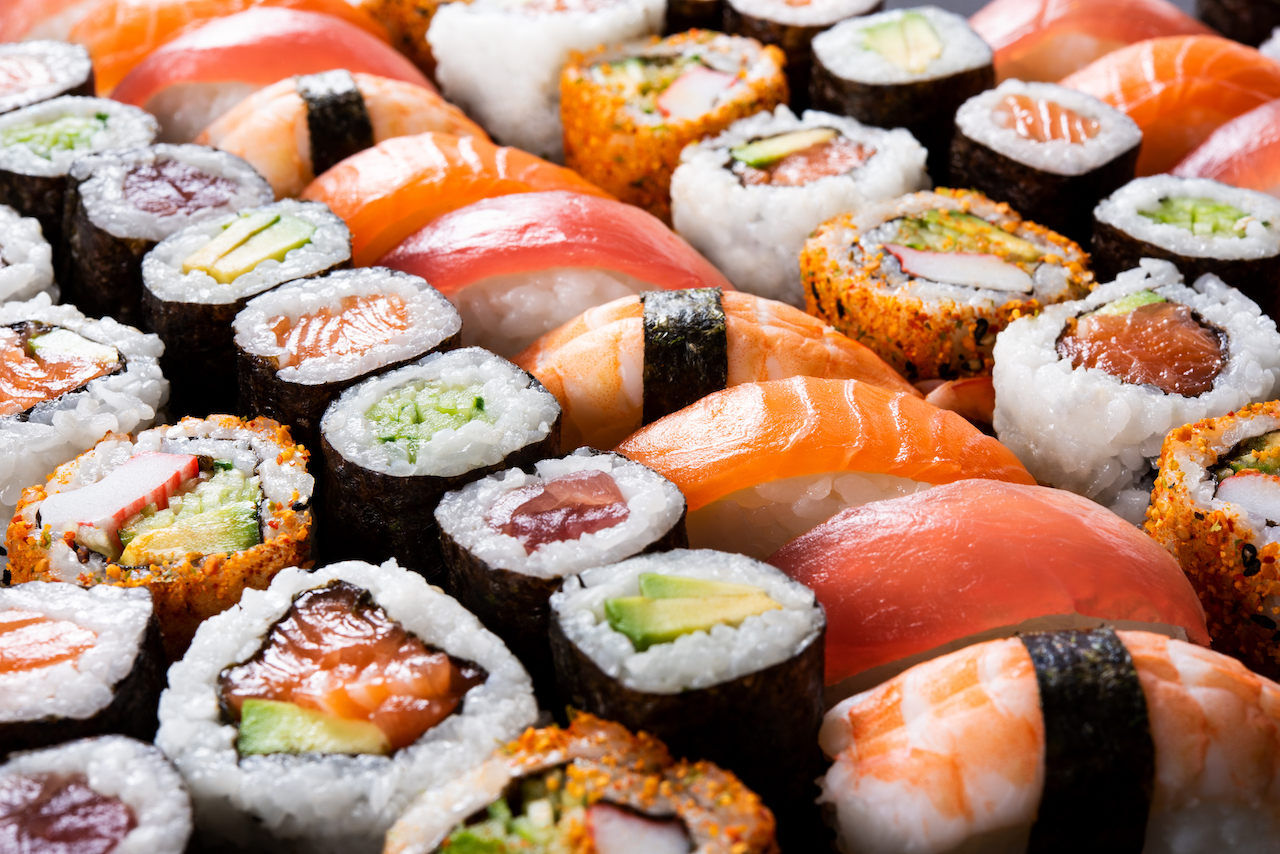Sushi (すし, 寿司, 鮨, 鮓, pronounced [sɯɕiꜜ] or [sɯꜜɕi]) is a Japanese dish of prepared vinegared rice (鮨飯, sushi-meshi), usually with some sugar and salt, accompanied by a variety of ingredients (ねた, neta), such as seafood, often raw, and vegetables. Styles of sushi and its presentation vary widely, but the one key ingredient is “sushi rice,” also referred to as shari (しゃり), or sumeshi (酢飯).
Sushi

Is sushi really raw fish?
Sushi is traditionally made with vinegar rice, seaweed wraps, vegetables, raw seafood, and occasionally cooked seafood. Sashimi is a dish of raw seafood served on its own. Eating sushi and sashimi is risky, especially if precautions aren’t taken, because you’re consuming raw foods.
What is sushi made of?
sushi, a staple rice dish of Japanese cuisine, consisting of cooked rice flavoured with vinegar and a variety of vegetable, egg, or raw seafood garnishes and served cold.
What does sushi mean?
sour rice
In Japanese, the word sushi means “sour rice” (the rice is traditionally moistened with rice vinegar). The word sashimi comes from the Japanese sashi, meaning “pierce” or “stabbing,” and mi, “flesh” or “body.” Many people associate sushi with a raw fish or seafood element, and it often includes these, but not always.
Is sushi a fish or dish?
While many people assume that sushi is also raw fish, it is actually vinegar rice that is mixed with a number of other ingredients, which can include either cooked or raw fish. Wile raw fish may be a traditional staple in most types of sushi, it is not a prerequisite for this dish.

Leave a Reply